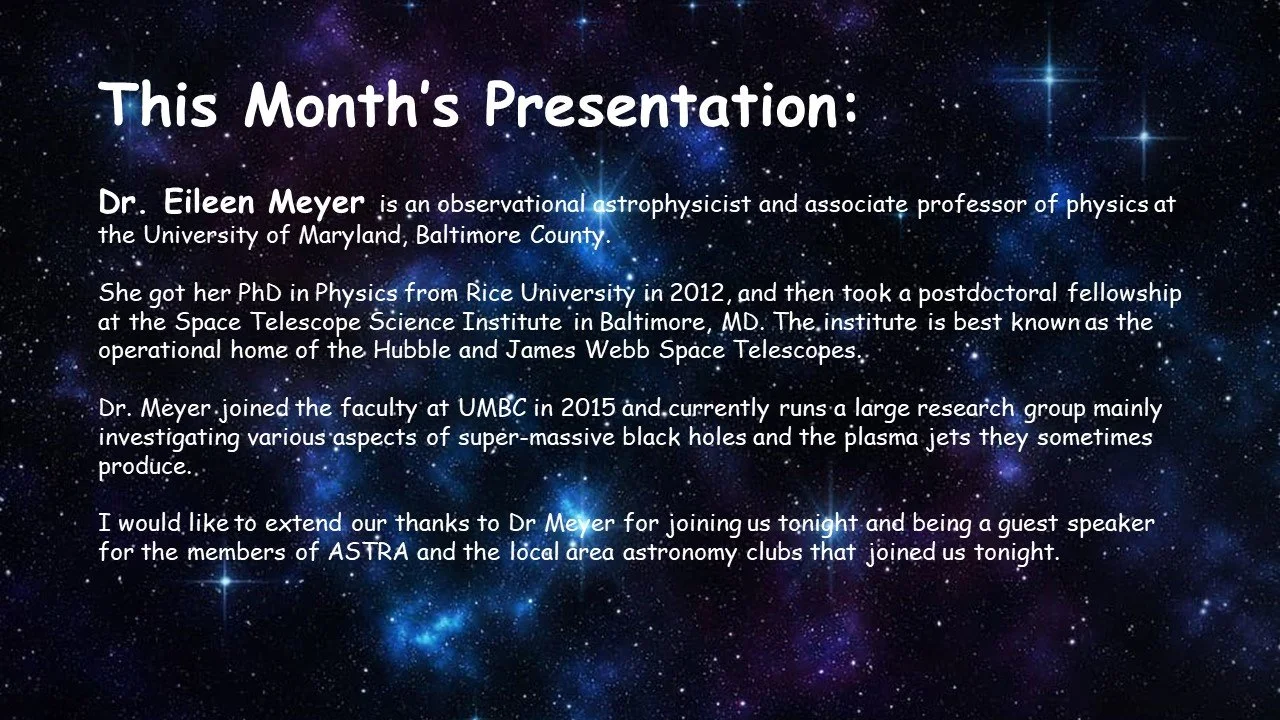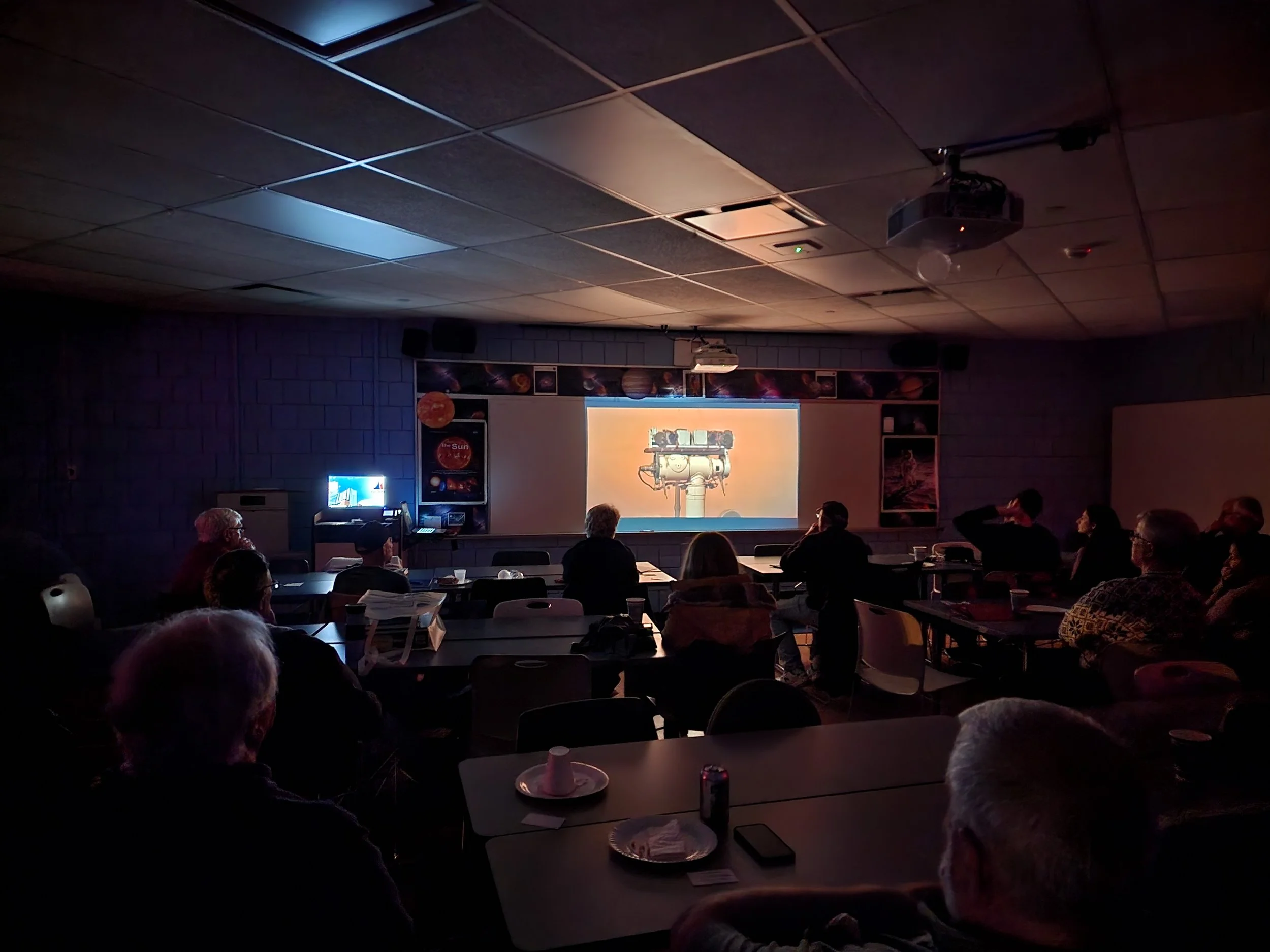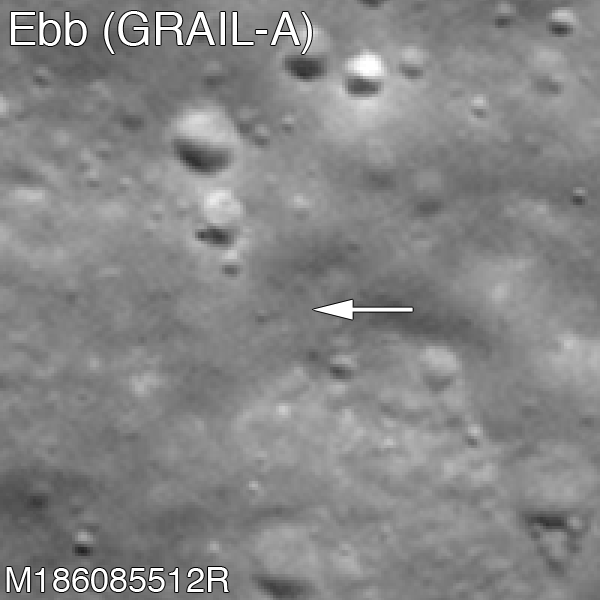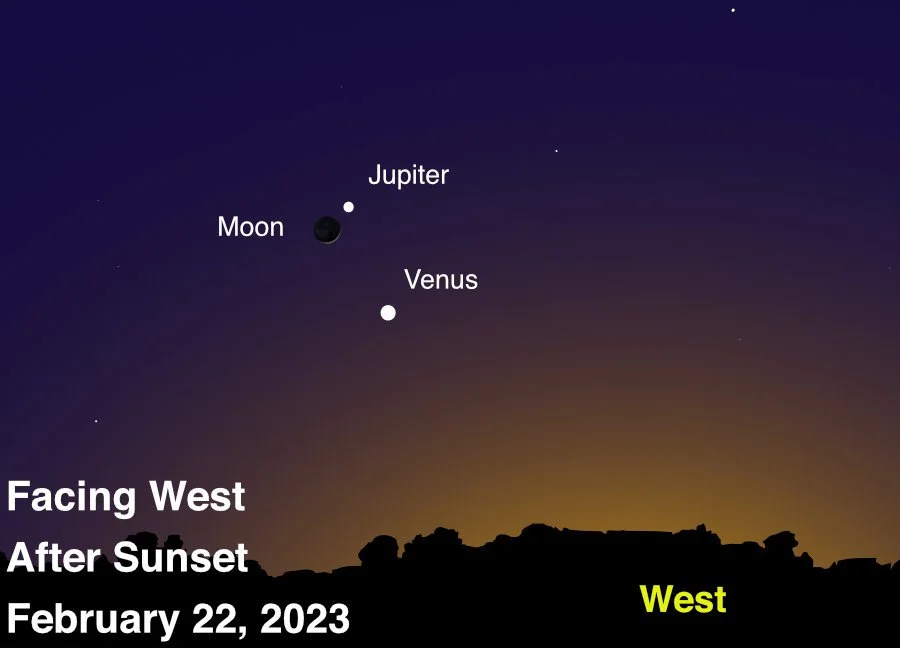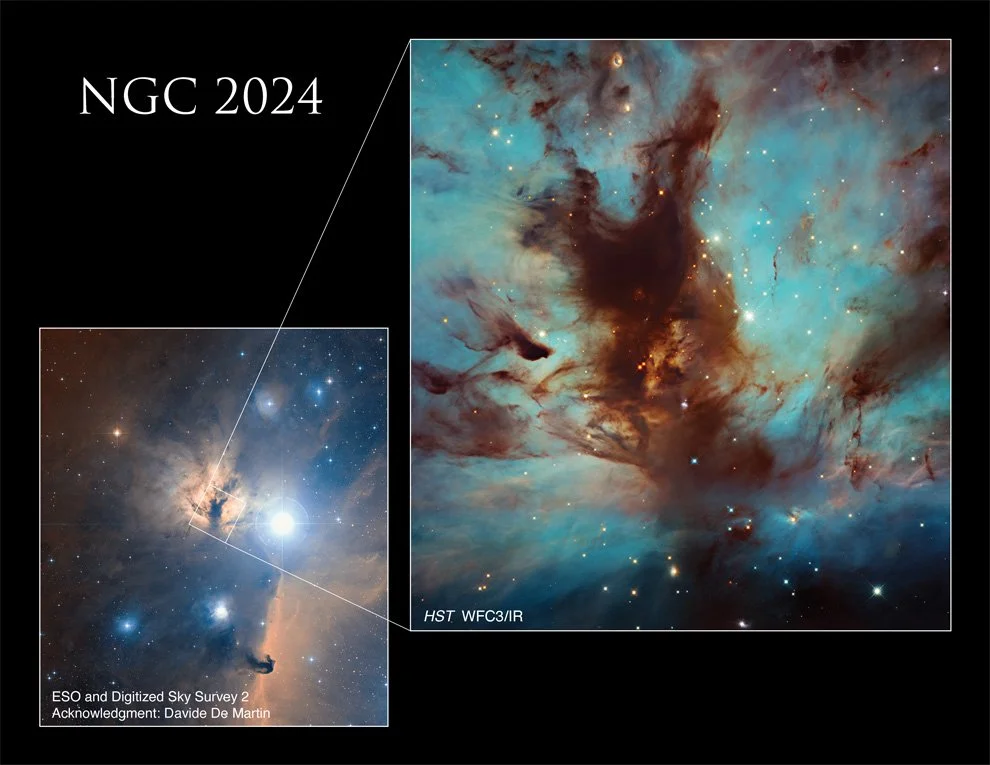Astral Projections Online February 2023
Check our Website for updated content at www.astra-nj.com
Club Presentations Wanted:
Does anyone have any astronomy items of interest to share with the membership?
Please let us know at Club Contacts.
Time to update your membership for 2023
〰️
Time to update your membership for 2023 〰️
Club dues and membership. Please update your membership now for 2023. If you renew after March 31 you will be renewed as a new member.
ASTRAL PROJECTIONS ONLINE (APO for short) is an email-linked publication for members only. If you exit APO to the club website or other resources you will need to use the emailed link again to get back to it. If you wish to retain a copy please bookmark or refer back to the email. We will make all efforts to post by the first week of the month.
Submissions Welcome: Members are invited to submit articles, photos, news, or stories for inclusion with Astral Projections Online. Please contact the ASTRA Webmaster.
Event Calendar
ASTRA’s next meeting will be Friday, February 10, 2023, at 7 PM EST. This will be an in-person meeting at Novins Planetarium - Building 13.
EVENT Cancellations: Members will receive email notifications of an event cancellation.
February ASTRA Meeting
We have been able to reschedule Doctor Meyer's presentation for February. She’ll start off the evening with ASTRA member Vic Palmieri wrapping up the evening for our February ASTRA meeting.
We’ll have some guests as well from South Jersey Astronomy Group and STAR.
Private - ASTRA Messier Marathon - IBSP March 18 - 6 PM, Must RSVP.
Public - Jakes Branch Star Party - March 25 - 7:30 PM
EXPO - NEAF 2023 - Rockland Community College - 145 College Rd, Suffern, NY - April 15 - 8:30 AM (All Day)
Public - Jakes Branch Star Party - April 22 - 8:30 PM
Upcoming County Park Presentations 2023
Public Outreach Presentations, if any member wishes to support ASTRA outreach efforts with the public, please let Vinny, Ro, or Jim know of any interest.
County Park presentations require a registration fee, call the hosting park to reserve.
Jakes Branch - February 21 - 6 PM - Astronomy with Binoculars - Canceled
Catus Island - February 28 - 6 PM - Beginner Milkyway Photography
Cattus Island Nature Festival - April 29 - 8 AM (All Day Event)
Website Updates …
Please visit our club website. We continue to have additional updates, if there is some content that would be useful to members please let us know.
"Astronomy taught us our insignificance in Nature.”
- Ralph Waldo Enerson - Poet
Event Reports
Nothing to report for January 2023
January ASTRA Meeting Summary
Good Night OPPY
Our January presentation was a viewing of Amazon Orignal, Good Night OPPY. a 2022 American documentary film directed by Ryan White and narrated by Angela Bassett. It had its world premiere at the 2022 Telluride Film Festival on September 3, 2022. It was released in a limited release on November 4, 2022, by Amazon Studios, prior to streaming on Prime Video on November 23, 2022.
The film tells the story of Opportunity, nicknamed Oppy, a Mars rover launched in 2003 that originally was expected to operate for only 90 sols but explored Mars for nearly 15 years. The film features archival and interview footage with scientists and engineers and re-creations of the rover's treks over the Martian landscape in search of water.
We had a good turnout for our January meeting and appears that everyone enjoyed the documentary on the Mars rovers. It was a bit longer than expected, but it all turned out well. If we do this again, we try for a shorter film.
As for future films, it won’t be for a while, presentations come first and we already have a good lineup of presentations for 2023. We still need something for the last three months of the year, so if there is an interest, please let us know.
I want to thank both Vinny Illuzzi and Matthew Michota for taking the time to step out of the movie and assisting a potential new member who needed some help with her recently purchased telescope.
It was a Celestron StarSense Explorer LT Reflector and performed collimation on it. Vinny and Matthew then provided some observing information tips.
We were a sight to see for the planetarium guest that was at a star show, so maybe it will get some more members coming our way. We can dream …
Our Nearest Neighbor
Let’s explore some interesting features, facts, or myths about our nearest neighbor, the Moon. Without it, life on Earth would be totally different, if not at all.
Citizen Science - Lunar Impact Monitoring
Your APO Editor has been working on some new public presentations and came across this interesting Citizen Science program from SciStarter.
The goal of this is for public support in observing the moon for meteor impacts that will occur on the moon. The chances of this increase during meteor showers.
From SciStarter:
NASA needs your help to monitor the rates and sizes of large meteoroids striking the moon’s dark side. By monitoring the moon for impacts, NASA can define the meteoroid environment and identify the risks that meteors pose to future lunar exploration. This data will help engineers design lunar spacecraft, habitats, vehicles, and extra-vehicular activity suits to protect human explorers from the stresses of the lunar environment.
For more go to Scistarter.
Upcoming Cattus Island Nature Festival
As many are aware the Cattus Island Nature Festival is going to be on April 29 this year. We had a great turnout and support for our ASTRA and IDA table and the weather was great for our Solar Telescopes. Cattus Island staff was extremely happy with us and asked us to return this year.
Hoping we can repeat the support this year and maybe other members come to join us for this day. All of it is not just manning our display, everyone gets time to participate in other events if they wish.
Having member participation in these kinds of events that we only do a few of, helps get the word out about ASTRA and maybe increase the membership. Over the past two years we’ve been getting more exposure with the parks and hopefully this helps.
We’ve helped support the IDA and now Scistarter a citizen science hub of over 3,000 programs was interested in joining us with a table of their own, that will have a Scistarter representative and some Verizon employees working the event.
Please reach out to Jim Webster if interested. We’ll also have a repeat of the pre-event get-together a week or two before, so we can review what we’ll be doing and have a good time in doing so.
Outreach material below is distributed free for public outreach.
Around The Web
A Child’s Introduction to the Night Sky has been revised and can be found on the Astronomical Society of the Pacific web page for those that may have some young astronomers. ASP Link
NASA’s Astrophoto Challenge for 2023 … visit earthsky.org for more information.
The challenge runs until February 28, 2023
New approach software derotation of the ISS captured on an alt-az mount. Astrobin
On the lighter side of astronomy …
Members Submitted Articles & Items
Whatever it is, the way you tell your story online can make all the difference.
Nothing for January
For more go to NASA Jet Propulsion Laboratory webpage: What’s Up: Skywatching Tips From NASA
This article and images are distributed by NASA Night Sky Network
The Night Sky Network program supports astronomy clubs across the USA dedicated to astronomy outreach.
Visit nightsky.jpl.nasa.gov to find local clubs, events, and more!
Spot the King of Planets: Observe Jupiter
By David Prosper
Jupiter is our solar system’s undisputed king of the planets! Jupiter is bright and easy to spot from our vantage point on Earth, helped by its massive size and banded, reflective cloud tops. Jupiter even possesses moons the size of planets: Ganymede, its largest, is bigger than the planet Mercury. What’s more, you can easily observe Jupiter and its moons with a modest instrument, just like Galileo did over 400 years ago.
This stunning image of Jupiter’s cloud tops was taken by NASA’s Juno mission and processed by Kevin M. Gill. You too can create amazing images like this, all with publicly available data from Juno. Go to missionjuno.swri.edu/junocam to begin your image procession journey – and get creative!
Full Image Credit: NASA/JPL-Caltech/SwRI/MSSS; Processing: Kevin M. Gill, license: CC BY 2.0) https://creativecommons.org/licenses/by/2.0/ Source: https://apod.nasa.gov/apod/ap201123.html
Jupiter’s position as our solar system’s largest planet is truly earned; you could fit 11 Earths along Jupiter’s diameter, and in case you were looking to fill up Jupiter with some Earth-size marbles, you would need over 1300 Earths to fill it up – and that would still not be quite enough! However, despite its awesome size, Jupiter’s true rule over the outer solar system comes from its enormous mass. If you took all of the planets in our solar system and put them together they would still only be half as massive as Jupiter all by itself. Jupiter’s mighty mass has shaped the orbits of countless comets and asteroids. Its gravity can fling these tiny objects towards our inner solar system and also draw them into itself, as famously observed in 1994 when Comet Shoemaker-Levy 9, drawn towards Jupiter in previous orbits, smashed into the gas giant’s atmosphere. Its multiple fragments slammed into Jupiter’s cloud tops with such violence that the fireballs and dark impact spots were not only seen by NASA’s orbiting Galileo probe, but also by observers back on Earth!
Jupiter is easy to observe at night with our unaided eyes, as well-documented by the ancient astronomers who carefully recorded its slow movements from night to night. It can be one of the brightest objects in our nighttime skies, bested only by the Moon, Venus, and occasionally Mars when the red planet is in opposition. That’s impressive for a planet that, at its closest to Earth, is still over 365 million miles (587 million km) away. It’s even more impressive that the giant world remains very bright to Earthbound observers at its furthest distance: 600 million miles (968 million km)! While the King of Planets has a coterie of around 75 known moons, only the four large moons that Galileo originally observed in 1610 – Io, Europa, Ganymede, and Calisto – can be easily observed by Earth-based observers with very modest equipment. These are called, appropriately enough, the Galilean moons. Most telescopes will show the moons as faint star-like objects neatly lined up close to bright Jupiter. Most binoculars will show at least one or two moons orbiting the planet. Small telescopes will show all four of the Galilean moons if they are all visible, but sometimes they can pass behind or in front of Jupiter, or even each other. Telescopes will also show details like Jupiter’s cloud bands and, if powerful enough, large storms like its famous Great Red Spot, and the shadows of the Galilean moons passing between the Sun and Jupiter. Sketching the positions of Jupiter’s moons during the course of an evening - and night to night – can be a rewarding project! You can download an activity guide from the Astronomical Society of the Pacific at bit.ly/drawjupitermoons
Look for Jupiter as it forms one of the points of a celestial triangle, along with Venus and a very thin crescent Moon, on the evening of February 22, 2023. This trio consists of the brightest objects in the sky – until the Sun rises! Binoculars may help you spot Jupiter’s moons as small bright star-like objects on either side of the planet. A small telescope will show them easily, along with Jupiter’s famed cloud bands. How many can you count? Keep watching Jupiter and Venus as the two planets will continue to get closer together each night until they form a close conjunction the night of March 1. Image created with assistance from Stellarium.
NASA’s Juno mission currently orbits Jupiter, one of just nine spacecraft to have visited this awesome world. Juno entered Jupiter’s orbit in 2016 to begin its initial mission to study this giant world’s mysterious interior. The years have proven Juno’s mission a success, with data from the probe revolutionizing our understanding of this gassy world’s guts. Juno’s mission has since been extended to include the study of its large moons, and since 2021 the plucky probe, increasingly battered by Jupiter’s powerful radiation belts, has made close flybys of the icy moons Ganymede and Europa, along with volcanic Io. In 2024 NASA will launch the Europa Clipper mission to study this world and its potential to host life inside its deep subsurface oceans in much more detail. Find the latest discoveries from Juno and NASA’s missions at nasa.gov.
NASA’s Mariner 10 was Mercury’s first robotic explorer, flying by three times between 1974-1975. Decades later, NASA’s MESSENGER first visited Mercury in 2008, flying by three times before settling into an orbit in 2011. MESSENGER thoroughly studied and mapped the planet before smashing into Mercury at the mission’s end in 2015. Since MESSENGER, Mercury was briefly visited by BepiColombo, a joint ESA/JAXA probe, which first flew by in 2021 and is expected to enter orbit in 2025 - after completing six flybys. Need more Mercury in your life? Check out NASA’s discoveries and science about Mercury at solarsystem.nasa.gov/mercury/, and visit the rest of the universe at nasa.gov.
Let’s Explore Space - What’s in the Sky February 2023.
With the above NSN Article, let’s give some article space to the planets as well.
Jupiter
Jupiter is the fifth planet from the Sun and the largest in the Solar System. It is a gas giant with a mass more than two and a half times that of all the other planets in the Solar System combined while being slightly less than one-thousandth the mass of the Sun. Wikipedia
Distance from Sun: 483.8 million mi
Orbital period: 12 years
Radius: 43,441 mi
Mass: 1.898 × 10^27 kg (317.8 M⊕)
Surface area: 23.71 billion mi²
Coordinates: RA 0h 22m 8s | Dec +1° 6′ 34″
Image: Sam Granovsky
Currently, Jupiter has 80 moons. 57 moons have been given official names by the International Astronomical Union (IAU). Another 23 moons are awaiting names.
More on Jupiter and its moons can be found at NASA Solar System Exploration.
Horsehead and Flame Nebula
APOD: December 29, 2022 Image by: J Close
Horsehead Nebula
Radius: 3.5 light-years
Magnitude: 6.8
Discovered: 1888
Distance to Earth: 1,500 light-years
Coordinates: RA 5h 40m 59s | Dec -2° 27′ 30″
Discoverer: Williamina Fleming
Apparent magnitude (V): 6.8
The Horsehead Nebula also known as Barnard 33, is a small dark nebula in the constellation Orion. The nebula is located just to the south of Alnitak, the easternmost star of Orion's Belt, and is part of the much larger Orion molecular cloud complex. Wikipedia
The Flame Nebula, also in the constellation Orion is designated as NGC 2024 and Sh2-277, is an emission nebula in the constellation Orion. It is about 900 to 1,500 light-years away. Wikipedia
Flame Nebula
Magnitude: 2
Radius: 6 light-years
Distance to Earth: 1,354 light-years
Declination: −01° 51′ 0.0″
Right ascension: 05h 41m 54s
Location: Constellation Orion kopernik.org
Apparent magnitude (V): 2
To see these objects a telescope of at least 10 inch aperture is needed along with an h-beta filter. They are often imaged together as they are that close to each other. They also make for a great wide field image along with the Orion Nebula. The constellation Orion does provide some good imaging opportunity that makes bearing the cold of winter.
Tonight’s Sky: February
The Winter Triangle in February is your guide to the night sky: The northern hemisphere is treated to views of the stars Procyon, Sirius, and Betelgeuse. Keep watching for the awe-inspiring space-based views of the Orion Nebula, which is sculpted by the stellar winds of central bright stars.
Visit the STScI which produces Hubblesite.org video overviews for Tonight’s Sky.
They can be found both on Facebook and stsci.edu.
Submissions Welcome
Members are invited to submit articles, photos, news, or stories for inclusion with Astral Projections Online. Please contact the ASTRA Webmaster.
